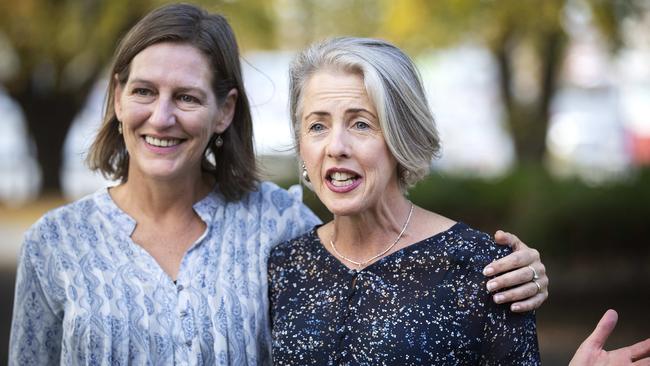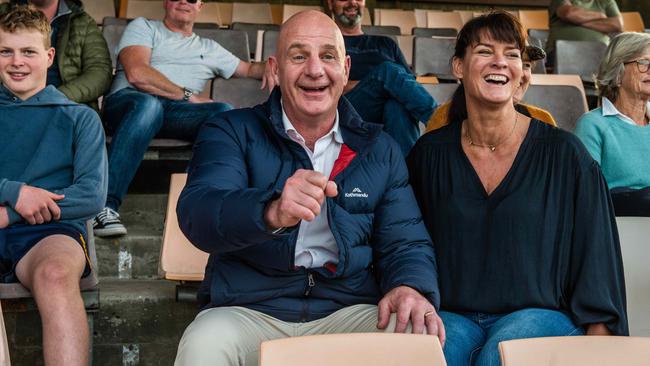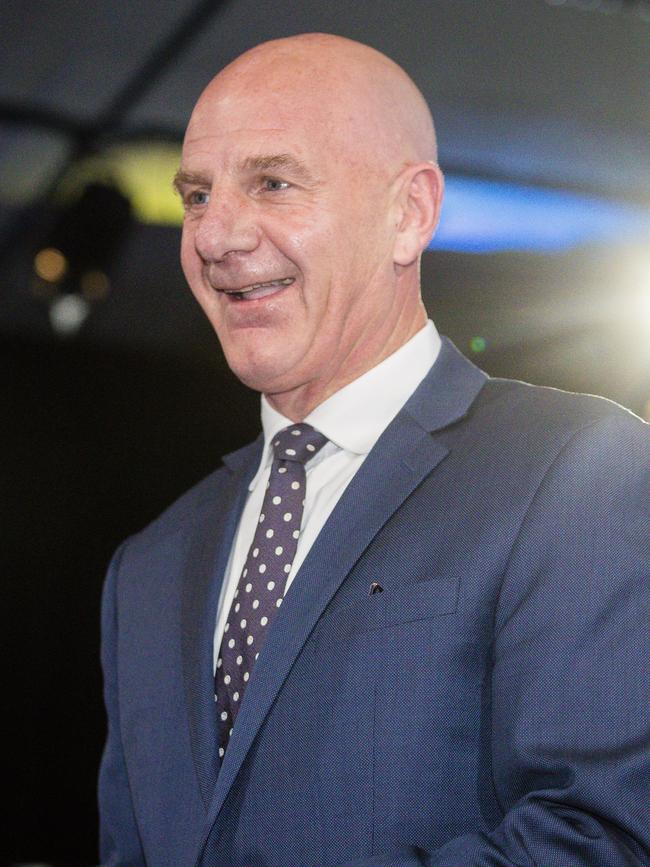Liberal Party state director Stuart Smith reveals how they won the State Election
While there was a lot of noise in the last week of the campaign, there was only one question that cut through to voters and won the race, the state director of the Tasmanian Liberal Party says.
Opinion
Don't miss out on the headlines from Opinion. Followed categories will be added to My News.
- Is Winter coming? Dean talks on potential leadership tilt
- Did Gutwein, White jump the gun on tally room stage?
AS Labor prime minister Bob Hawke used to say, the voters always get it right.
There is nothing more humbling than to be judged by the voters for whom we all seek to serve, despite our differing views.
On Saturday, the Tasmanian people made their views well known. They want a stable majority Gutwein Liberal government getting on with the job, not the backroom factional antics and horse-trading offered by opposing candidates.
Observer Kevin Bonham tweeted that after preferences, he projected an effective 57-43 two-party-preferred result, which is slightly stronger than his estimated 56-44 two-party preferred at the 2018 election.
Estimated 2PP equivalent for #tasvotes 57-43 to Liberal (cf 60-40 2014, 56-44 2018). Note that this is treating Tas as optional preferencing (which it in effect is).#politas
— Kevin Bonham (@kevinbonham) May 2, 2021
When the votes are all counted, it will be the first time the Liberal Party has won government three times in a row, a fantastic testament to Premier Peter Gutwein and his team.
This election, the Liberal vote increased in Bass, Braddon and Lyons. As expected, the retirement of popular Will Hodgman saw our vote decline in Franklin, and despite independents gaining a large 23.7 per cent in Clark, our vote held up relatively well compared to Labor’s, which collapsed by 20 per cent. Statewide, Labor lost a seat (compared to the 2018 election) and its vote fell by 4.4 per cent to just over 28 per cent, barely above the 27.3 per cent they recorded in the 2014 wipe-out.
This makes it one of Labor’s worst election defeats, ever.
Despite all their spin, the Greens failed to win any additional seats and their vote remains below what they the recorded in the 2014 wipe-out, when it lost two seats.

A lot of moving parts go into an election campaign, but at the end of the day campaigns live and die by one thing: what question are people thinking about when they go into the polling booth?
Over the length of the campaign, we were focused solely on encouraging voters to consider one question: who do you want to be premier?
We did this because we knew that Premier Gutwein was respected for his decision-making ability and his steady and steadfast leadership. This is what the “Premier’s Chair” campaign was all about.
Labor on the other hand sought to make the question on polling day one about health. However, while it may have talked a lot about health during the campaign, it manifestly failed to convince voters it had any credible plan. Voters clearly saw through Labor’s empty words.
Our exit polling on Saturday found that statewide, the deciding factor for 51 per cent of voters was “leader” or “party”, compared to only 28 per cent who nominated “an issue or policy”. These figures almost identically matched the primary votes for us and Labor, and were also reflected closely in the differing electorate votes.

For Labor, it was the age-old problem: you can’t fatten the pig on market day. Voters simply weren’t convinced that Labor could do any better on health, despite their claims.
There’s been a lot of media talk suggesting that while Labor had a terrible start to the campaign (agreed), they somehow ran a much better second half of the campaign than us. This is demonstrably wrong. Our internal polling during the middle of the campaign, by Leanne White of Insightfully, found us leading Labor 49-29 on a statewide basis and winning 13 seats. This result was almost exactly replicated on Saturday.
The truth is, while there was a lot of noise in the last week of the campaign (like there almost always is) there was only one question that cut through to voters, and that was our message about the Premier’s Chair and majority/minority government.
Successful campaigns require immense teamwork, hard work and dedication. I would like to thank all those people involved in the Liberal campaign — you know who you are. In particular, I would like to pay tribute to Premier Peter Gutwein who, despite this being in his first campaign as leader, campaigned strongly and with great discipline during those long days.

I would also like to shout out to everyone else involved in the election process from other parties, particularly Stuart Benson, my counterpart at the Labor Party. Despite some early preselection challenges, you still kept fronting up and working very hard for your team, for which you have my deep respect.
A final thank you to Andrew Hawkey and his staff at the Tasmanian Electoral Commission who, despite the short lead time and two Legislative Council elections held on the same day, ran a professional election across the state.
Every election reminds me how lucky we are to live in a place where we can democratically have our say about our state’s future without fear or favour.
Stuart Smith is the state director of the Tasmanian Liberal Party.


